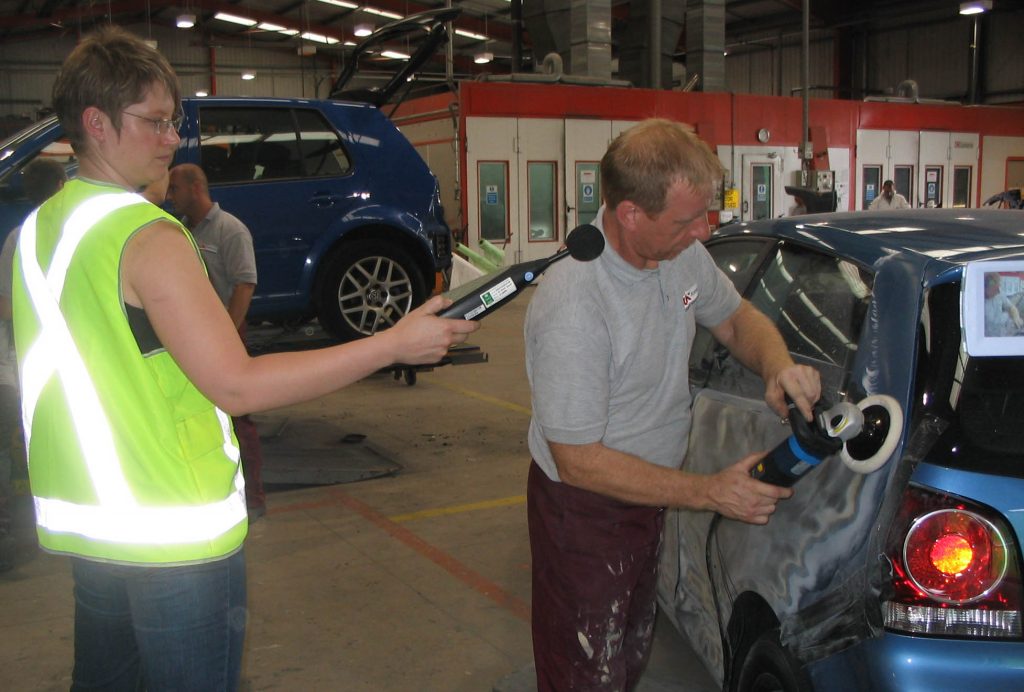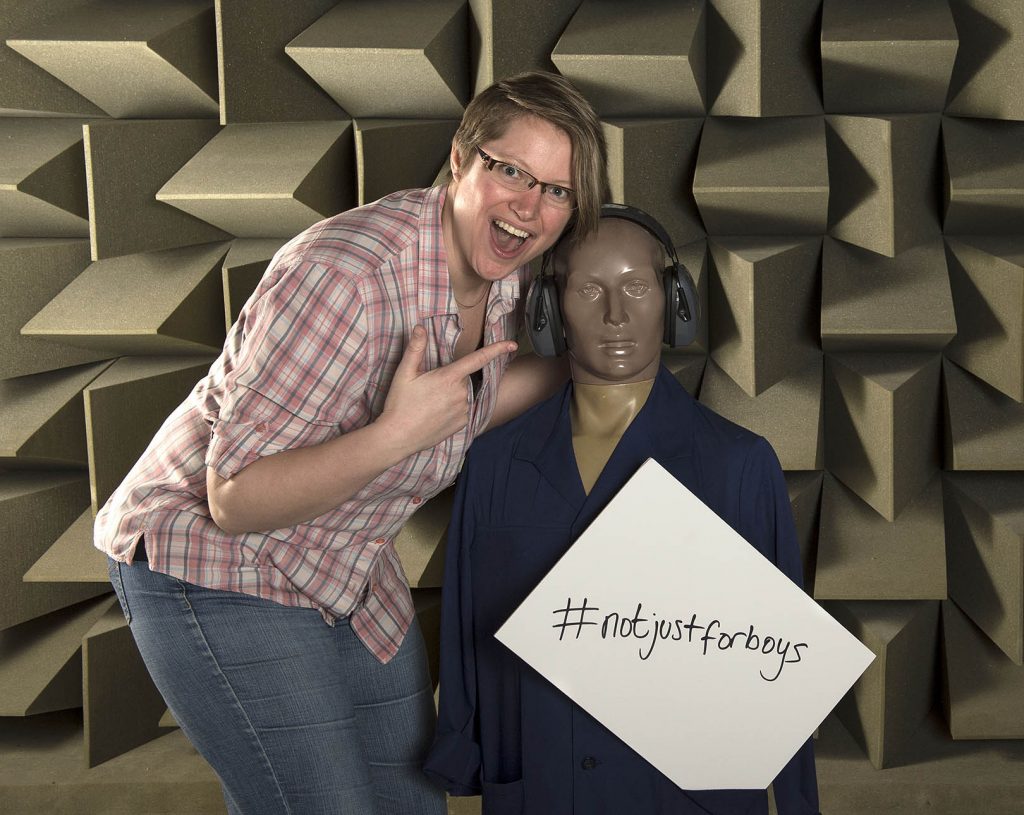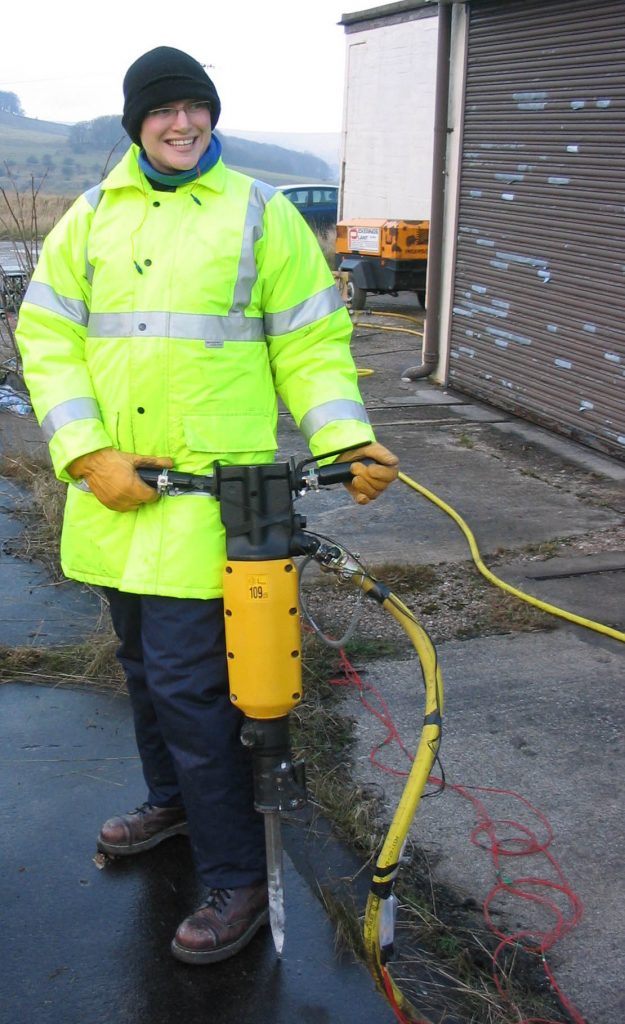
Work place noise assessment 
Anechoic chamber 
Testing drill vibration
I never cease to be amazed by just how much our world is affected and shaped by sound – wanted or unwanted. Helping others understand that, and how they can individually and collectively have a positive impact on their personal soundscape is very rewarding.
Emma Shanks, Health and Safety Executive (HSE)
What did you study to get into acoustics?
I studied Music, Acoustics and Recording at Salford University. When I started the degree I was intent on being a professional muso / sound engineer / producer. However, I’d deliberately chosen a course with ‘proper science’ in it, just in case the professional muso / sound engineer / producer thing didn’t work out. Turns out I liked the proper science more.
What makes acoustics interesting to you?
Acoustics affects every aspect of life, every part of day to day living. It’s not always labelled ‘acoustics’, and sometimes we understand acoustics without even realising it!
What do you do on a typical workday?
There is no such thing as a ‘typical’ work day. I might be in the laboratory or out in industry carrying out noise and/or hand-arm vibration measurements for research projects for HSE or others. I could be out on a site visit with HSE inspector colleagues, supporting them with technical know-how. At my desk I could be fielding enquiries from members of the public or writing up research/site visits ready for publication. Sometimes I’m delivering technical training. It’s really quite varied.
What are the most important skills to have in your job?
Patience, GSOH, interpersonal skills, methodical and logical approach to problem solving, and knowing about noise and vibration!
What’s one of the most exciting projects you’ve ever done?
Other than to say I’ve worked at some fascinating military sites, I can’t talk about it!
How does your work make a difference to people’s lives?
It helps people understand, and more importantly do something about, the risks from long term exposure to noise and vibration. Noise-induced hearing loss (NIHL) and hand-arm vibration syndrome (HAVS) are both occupational illnesses that needlessly affect millions of people in the UK. Both are entirely preventable. If my work helps just one individual understand and positively act, that’s one less statistic for NIHL and HAVS – result.
What else might a student need to know about a career in acoustics?
Acoustics is everywhere. It permeates every industry, every environment, in some way, shape or form. The only limits are the ones you put on yourself.
Tell us a fun acoustic fact!
The three smallest bones in the human body are found in the middle ear. Collectively known as the ossicles they are the hammer, anvil and stirrup or to give them their Latin names malleus, incus, stapes. In fish the ossicle cells develop into gills.